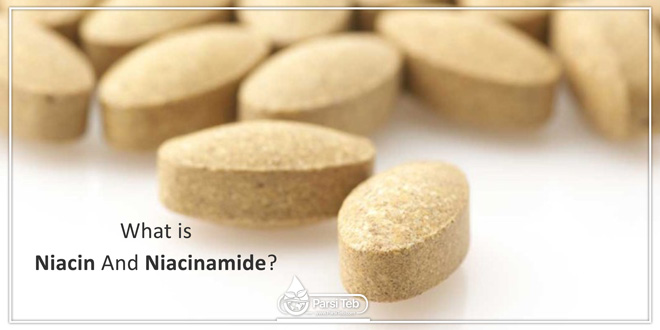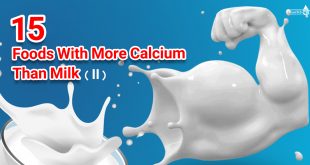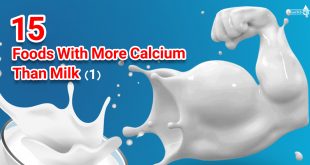What other names is Niacin And Niacinamide (vitamin B3) known by?
3-Pyridine Carboxamide, 3-Pyridinecarboxylic Acid, Acide Nicotinique, Anti-Blacktongue Factor, Antipellagra Factor, B Complex Vitamin, Niacina y Niacinamida, Niacine, Niacinamide, Nicamid, Nicosedine, Nicotinamide, Nicotinic Acid, Nicotinic Acid Amide, Nicotylamidum, Pellagra Preventing Factor, Vitamin B3, Vitamin PP, Vitamina B3, Vitamine B3.
What is Niacin And Niacinamide (vitamin B3)?
Niacin and niacinamide are forms of Vitamin B3. Vitamin B3 is found in many foods including yeast, meat, fish, milk, eggs, green vegetables, beans, and cereal grains. Niacin and niacinamide are also found in many vitamin B complex supplements with other B vitamins.
Effective for…
* Treatment and prevention of niacin deficiency, and certain conditions related to niacin deficiency such as pellagra.
* High cholesterol. Only niacin seems to lower cholesterol, not niacinamide.
Possibly Effective for…
* Heart disease, including hardening of the arteries (atherosclerosis).
* Reducing the risk of a second heart attack in men with heart or circulatory disorders.
* Diarrhea from an infection called cholera.
* Diabetes, types 1 and 2.
* Prevention of cataracts, an eye condition.
* Osteoarthritis.
* Alzheimer’s disease. People who consume more niacin in foods and from a multivitamin seem to have a lower risk of getting Alzheimer’s disease compared to people who consume less niacin. But there is no evidence that taking a niacin supplement is beneficial for preventing Alzheimer’s disease.
Insufficient Evidence to Rate Effectiveness for…
* Migraine headache, dizziness, depression, motion sickness, alcohol dependence, improving orgasm, acne, attention deficit-hyperactivity disorder (ADHD), and other conditions.
How does Niacin And Niacinamide (vitamin B3) work?
Niacinamide can be made from niacin in the body. Niacin and niacinamide are required for the proper function of fats and sugars in the body and to maintain healthy cells.
Are there safety concerns?
Niacin and niacinamide are safe for most people when taken by mouth. A common minor side effect of niacin is a flushing reaction. This might cause burning, tingling, itching, and redness of the face, arms, and chest, as well as headaches. Starting with small doses of niacin and taking 325 mg of aspirin before each dose of niacin will help reduce the flushing reaction. Usually, this reaction goes away as the body gets used to the medication. Alcohol can make the flushing reaction worse. Avoid large amounts of alcohol while taking niacin.
Other minor side effects of niacin and niacinamide are stomach upset, intestinal gas, dizziness, pain in the mouth, and other problems.
When doses of over 3 grams per day of niacin are taken, more serious side effects can happen. These include liver problems, gout, ulcers of the digestive tract, loss of vision, high blood sugar, irregular heartbeat, and other serious problems. Similar side effects can happen with large doses of niacinamide.
Niacinamide seems to be safe when used appropriately in children.
Niacin and niacinamide are also safe for pregnant and breast-feeding women when taken in the recommended amounts. The recommended amount of niacin is 18 mg per day during pregnancy and 19 mg per day while breast-feeding.
Niacin and niacinamide might increase blood sugar. People with diabetes who take niacin or niacinamide should check their blood sugar carefully.
Do not use niacin or niacinamide if:
* You have allergies. They can make allergies more severe.
* You have gallbladder disease.
* You have gout.
* You have angina.
* You have very low blood pressure.
* You have kidney or liver disease.
* You have stomach or intestinal ulcers.
* You are scheduled for surgery in the next two weeks.
Are there any interactions with medications?
Alcohol (Ethanol)
Interaction Rating: Moderate Be cautious with this combination.
Talk with your health provider.
Niacin can cause flushing and itchiness. Consuming alcohol along with niacin might make the flushing and itching worse. There is also some concern that consuming alcohol with niacin might increase the chance of having liver damage.
Allopurinol (Zyloprim)
Interaction Rating: Moderate Be cautious with this combination.
Talk with your health provider.
Allopurinol (Zyloprim) is used to treat gout. Taking large doses of niacin might worsen gout and decrease the effectiveness of allopurinol (Zyloprim).
Carbamazepine (Tegretol)
Interaction Rating: Moderate Be cautious with this combination.
Talk with your health provider.
Carbamazepine (Tegretol) is broken down by the body. There is some concern that niacinamide might decrease how fast the body breaks down carbamazepine (Tegretol). But there is not enough information to know if this is important.
Clonidine (Catapres)
Interaction Rating: Moderate Be cautious with this combination.
Talk with your health provider.
Clonidine and niacin both lower blood pressure. Taking niacin with clonidine might cause your blood pressure to become too low.
Medications for diabetes (Antidiabetes drugs)
Interaction Rating: Moderate Be cautious with this combination.
Talk with your health provider.
Long-term use of niacin and niacinamide might increase blood sugar. By increasing blood sugar, niacin and niacinamide might decrease the effectiveness of diabetes medications. Monitor your blood sugar closely. The dose of your diabetes medication might need to be changed.
Some medications used for diabetes include glimepiride (Amaryl), glyburide (DiaBeta, Glynase PresTab, Micronase), insulin, pioglitazone (Actos), rosiglitazone (Avandia), metformin (Glucophage), nateglinide (Starlix), repaglinide (Prandin), chlorpropamide (Diabinese), glipizide (Glucotrol), tolbutamide (Orinase), and others.
Medications used for lowering cholesterol (Bile acid sequestrants)
Interaction Rating: Moderate Be cautious with this combination.
Talk with your health provider.
Some medications for lowering cholesterol called bile acid sequestrants can decrease how much niacin or niacinamide the body absorbs. This might reduce the effectiveness of niacin or niacinamide. Take niacin or niacinamide and the medications at least 4-6 hours apart.
Some of these medications used for lowering cholesterol include cholestyramine (Questran) and colestipol (Colestid).
Medications used for lowering cholesterol (Statins)
Interaction Rating: Moderate Be cautious with this combination.
Talk with your health provider.
Niacin can adversely affect the muscles. Some medications used for lowering cholesterol called statins can also affect the muscles. Taking niacin along with these medications might increase the risk of muscle problems.
Some of these medications used for high cholesterol include rosuvastatin (Crestor), atorvastatin (Lipitor), lovastatin (Mevacor), pravastatin (Pravachol), fluvastatin (Lescol), and simvastatin (Zocor).
Primidone (Mysoline)
Interaction Rating: Moderate Be cautious with this combination.
Talk with your health provider.
Primidone (Mysoline) is broken down by the body. There is some concern that niacinamide might decrease how fast the body breaks down primidone (Mysoline). But there is not enough information to know if this is important.
Probenecid
Interaction Rating: Moderate Be cautious with this combination.
Talk with your health provider.
Probenecid is used to treat gout. Taking large doses of niacin might worsen gout and decrease the effectiveness of probenecid.
Sulfinpyrazone (Anturane)
Interaction Rating: Moderate Be cautious with this combination.
Talk with your health provider.
Sulfinpyrazone (Anturane) is used to treat gout. Taking large doses of niacin might worsen gout and decrease the effectiveness of sulfinpyrazone (Anturane).
Aspirin
Interaction Rating: Minor Be cautious with this combination.
Talk with your health provider.
Aspirin is often used with niacin to reduce the flushing caused by niacin. Taking high doses of aspirin might decrease how fast the body gets rid of niacin. This could cause there to be too much niacin in the body and possibly lead to side effects. But the low doses of aspirin most commonly used for niacin-related flushing don’t seem to be a problem.
Nicotine patch (Transdermal nicotine)
Interaction Rating: Minor Be cautious with this combination.
Talk with your health provider.
Niacin can sometimes cause flushing and dizziness. The nicotine patch can also cause flushing and dizziness. Taking niacin or niacinamide and using a nicotine patch can increase the possibility of becoming flushed and dizzy.
Dosing considerations for Niacin And Niacinamide (vitamin B3).
The following doses have been studied in scientific research:
BY MOUTH:
* For high cholesterol: The effects of niacin are dose-dependent. The biggest increases in HDL and decreases in triglycerides occur at 1200-1500 mg/day. Niacin’s greatest effects on LDL occur at 2000-3000 mg/day.
* To prevent heart disease in people with high cholesterol: Niacin 4 grams daily.
* For preventing and treating vitamin B3 deficiency: Doses of nicotinic acid and niacinamide are considered equivalent. For mild vitamin B3 deficiency, niacin or niacinamide 50-100 mg per day is used. For pellagra in adults, niacin or niacinamide 300-500 mg daily is given in divided doses. For pellagra in children, niacin or niacinamide 100-300 mg daily is given in divided doses. For Hartnup disease, niacin or niacinamide 50-200 mg daily.
* For reducing fluid loss caused by cholera toxin: Niacin 2 grams daily.
* To prevent type 1 diabetes in high-risk children: Sustained-release niacinamide 1.2 grams/m² (body surface area) per day.
* To slow disease progression of newly diagnosed type 1 diabetes: Niacinamide 25 mg/kg daily.
* For treating osteoarthritis: Niacinamide 3 grams per day in divided doses.
* For reduced risk of cataracts: A daily dietary intake of approximately 44 mg of niacin.
* For preventing Alzheimer’s disease: 17-45 mg of niacin from food and multivitamins. Food sources high in niacin include meat, fish, beans, nuts, coffee, and fortified grains and cereals. Note that there is no reliable evidence that taking a stand-alone niacin supplement will help to prevent Alzheimer’s disease.
The daily recommended dietary allowances (RDAs) of niacin are: Infants 0-6 months, 2 mg; Infants 7-12 months, 4 mg; Children 1-3 years, 6 mg; Children 4-8 years, 8 mg; Children 9-13 years, 12 mg; Men 14 years and older, 16 mg; Women 14 years and older, 14 mg; Pregnant women, 18 mg; and Lactating women, 17 mg. The maximum daily dose of niacin is: Children 1-3 years, 10 mg; Children 4-8 years, 15 mg; Children 9-13 years, 20 mg; Adults, including Pregnant and Lactating women, 14-18 years, 30 mg; and Adults, including pregnant and breast-feeding women, older than 18 years, 35 mg.
 Parsi Teb Physical and Mental Health Journal
Parsi Teb Physical and Mental Health Journal 



